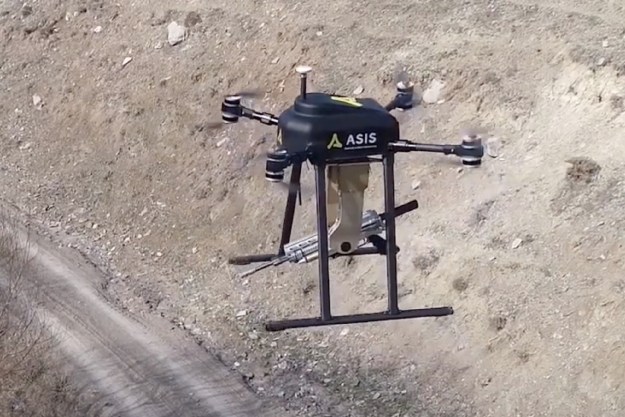There is no shortage of stunning aerial photos to show what drones can do in the air. But drones can go in the other direction, too — and, in the process, help traverse some seriously challenging underground environments that would be extremely dangerous for humans to explore. Underground environments such as the world’s deepest ice caves, close to 1,000 feet below ground level on the Greenland ice sheet.
In a newly released video, Swisscom Ventures shows off a research expedition in which the Swiss company Flyability used one of its Elios drones to explore just such a cave to study the effects of climate change on the ice. It’s the same location where, in 1996, the French speleologist Janot Lamberton made what was, at the time, the deepest ever ice cave descent to a depth of 660 feet. However, since then, the caves have become too challenging an environment to safely descend into. This is where the Elios drone came into play, since it was able to carry out this journey and record images for the surface crew. It even discovered a hidden lake on the icy floor.
The distinctive Elios drone boasts a protective cage-like frame made of carbon fiber. This allows it to safely collide with surroundings at speeds of up to 15 kilometers per hour without suffering damage. It also has live video feedback with HD and thermal imaging, and on-board LED lighting for exploring dark crevices.

Solving the collision problem
“Collisions are the worst thing that can happen to a drone because collisions usually end up in a crash,” Marc Gandillon, marketing director for Flyability, told Digital Trends. “When you put in place a mission like the one we joined in Greenland, you don’t want your mission to be aborted due to a drone crash. Our drones are built to be collision resilient. This gives them an indisputable advantage on other drones to take part in such missions and enter places like the deep ice cave we inspected [on this deployment].”
When it’s not exploring the world’s deepest ice caves in scenes that wouldn’t look out of place in a James Cameron movie, Flyability’s drones are used in a variety of scenarios in which it is prohibitive for humans to travel. This includes work in the mining, maritime, oil and gas, and assorted other industries.
“Our products are preliminary targeting the asset maintenance business in providing a tool to perform remote visual inspections indoors,” Gandillon said. “Visual inspections require human entries in dangerous areas, most of the time [in] confined spaces. Using a tool like our drones to perform these visual inspections remotely keep workers out of harm’s way, while reducing the overall cost and time related to these operations. It also provides a higher level of data quality.”
Editors' Recommendations
- Fire-starting drones are actually helping some firefighters
- Watch this FPV drone take on the world’s highest waterfall
- Testing Mars exploration drones on Icelandic lava flows
- Autonomous drones are helping to keep a U.S. Air Force base in California secure
- Bubble-blowing drone could help pollinate flowers when no bees are around


